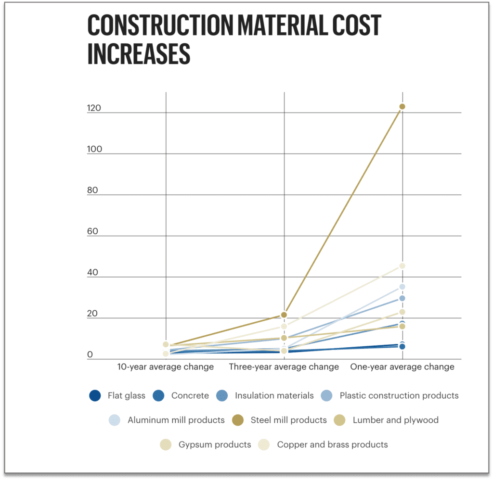
KEY POINTS:
- Developers and speculators argue that Austin’s land code is constraining housing supply, but the city’s former demographer calls this claim a “false narrative”
- He believes housing production is at or near its maximum level, a fact confirmed by local builders suffering labor and material shortages
- Changing the land code would make future development more profitable for the real estate sector, not more affordable for residents
For years, land developers and their allies in City Hall have pushed for a wholesale rewrite of Austin’s land development code, arguing that its “outdated” language is slowing local construction.
As we reported last week, former City of Austin Demographer Ryan Robinson called this claim a “false narrative” in a report on local housing supply. After taking a hard look at construction data, he concluded the production of Austin-area homes has actually been booming.
But would revamping our land code boost the level of new housing even further?
Robinson doesn’t think so. He believes home construction is already at or near its peak, and that changing the code would do little to change that fact:
[E]ven if the code were to be dramatically opened up with vast increases in entitlements, I’m just not sure we would see levels of production much above what we’re currently seeing—the pipeline of production must be nearing a maximum threshold of sorts.— Ryan Robinson
Former Demographer, City of Austin
Q419 Multifamily Housing Report
A local construction training coordinator backed up Robinson’s conclusion in a recent interview in the Austin Business Journal:
Every project is hurting. Everyone could use some help. There’s just not enough money. [Some jobs are] taking on inexperienced people, showing them what they need to know as they go. There’s just too much work and not enough workers.
— Bobby Vasquez
Gulf Coast Carpenters & Millwrights Training Trust Fund
Austin Business Journal, July 23, 2021
According to the article’s author, local construction companies are now spending more to attract workers than competitors in every other metro area in the United States.
Those same companies are also suffering a severe shortage of building materials, a problem that isn’t unique to Austin. According to Reuters, nationwide lumber prices rose a record 154% between May 2020 and May 2021, and copper, steel, and other building materials saw similar increases.
The backlog of building projects induced by the COVID-19 pandemic has led to shortages of lumber, steel, copper, and other construction materials. SOURCES: U.S. Bureau of Labor Statistics Producer Price Index, Austin Business Journal
The real constraint on Austin’s over-the-top production isn’t the land development code, but shortages of materials and workers. Changing the code won’t do anything to solve those problems, so why the big push for it?
The answer is simple: If the City of Austin rewrites the code as planned, then developers who own land will see an immediate increase in entitlements (a term that refers to the types of structures that may be built under zoning regulations). An increase in entitlements on a plot of land typically translates into a higher market value. That means developers could boost their bank accounts without ever having to go through the rezoning process, which gives nearby residents an opportunity to make their voices heard.
In other words, City Hall’s proposed land code revision is about profitability, not affordability.
We’ll dispel more myths about zoning and Austin’s land development code in the coming weeks. Stay tuned!
